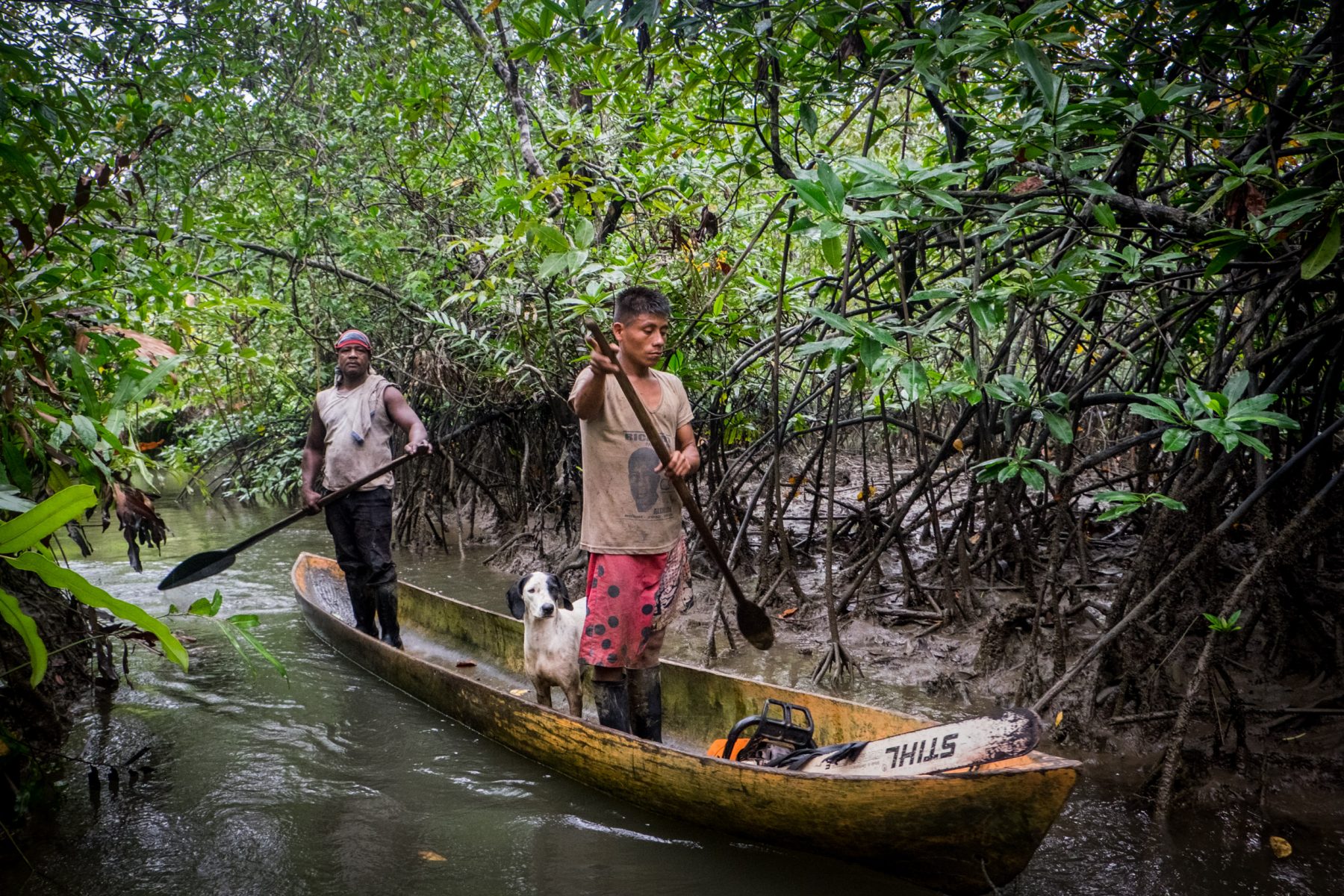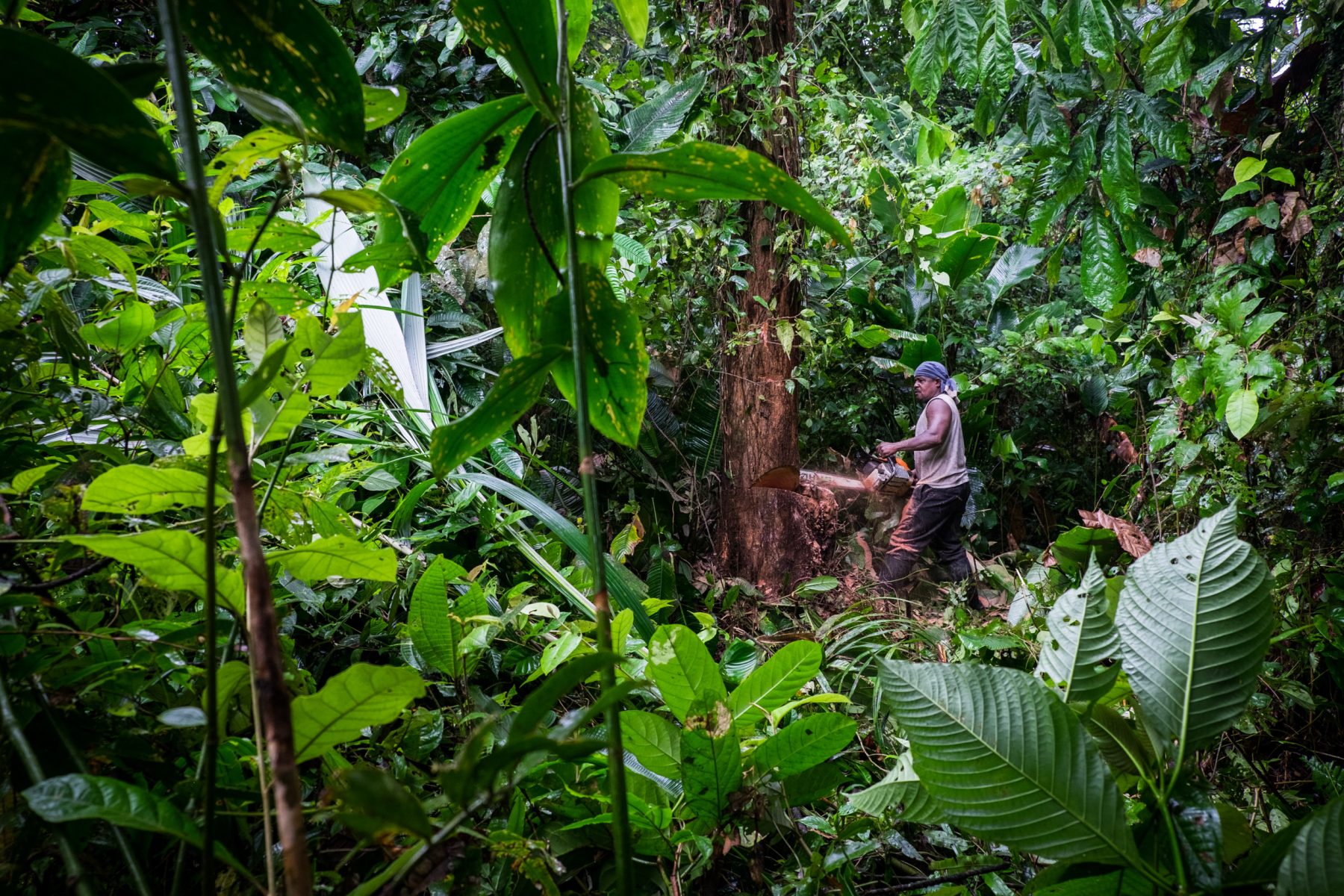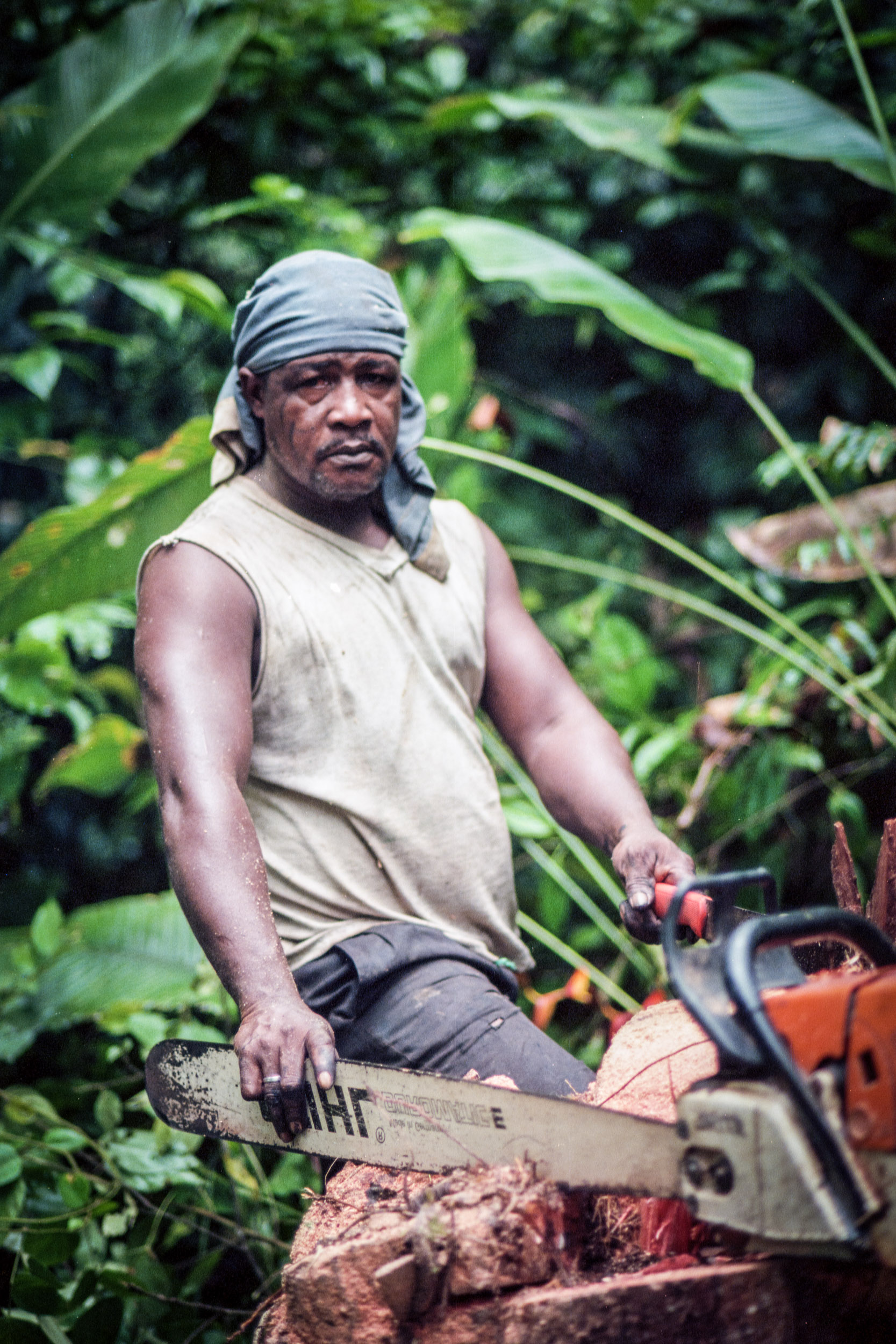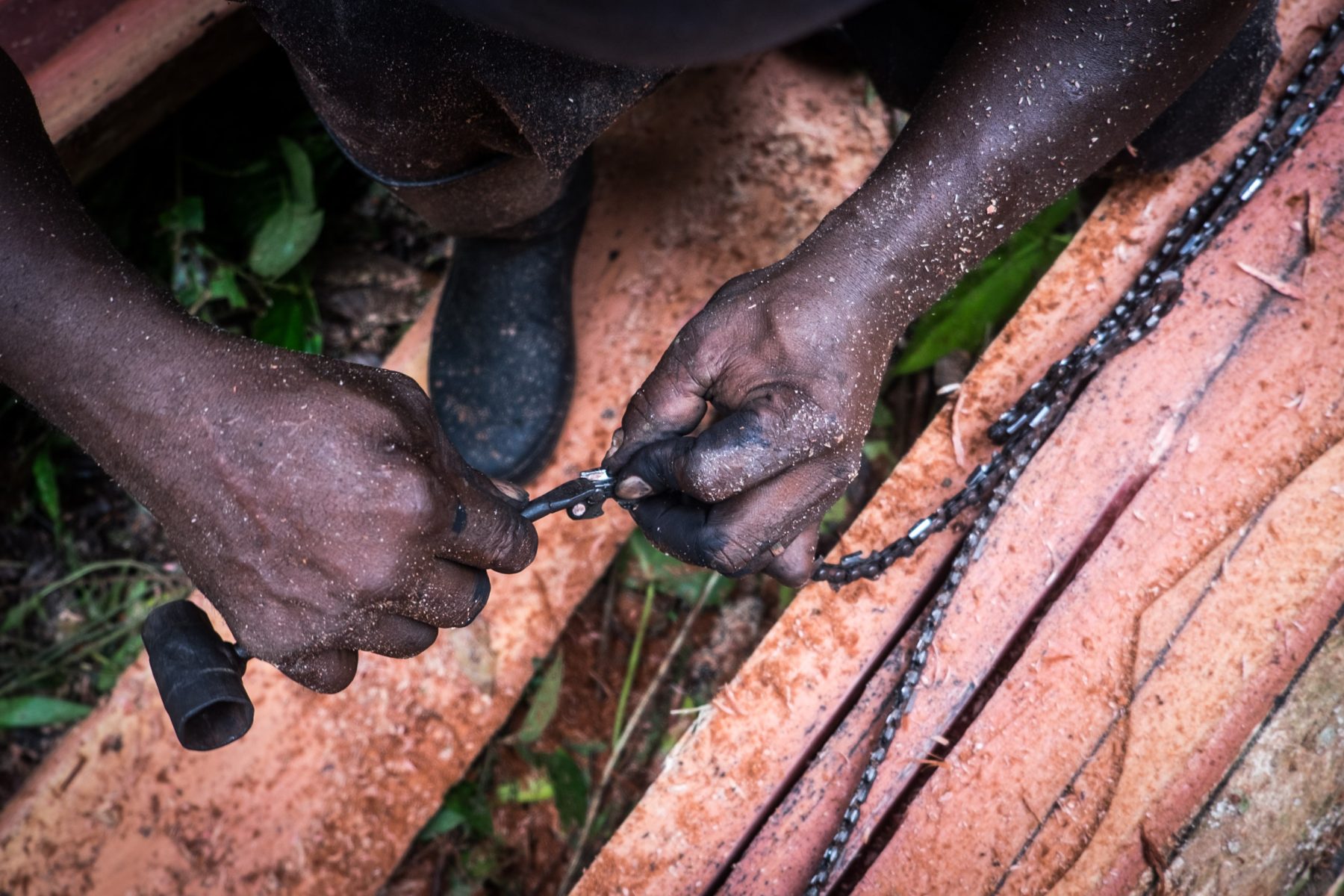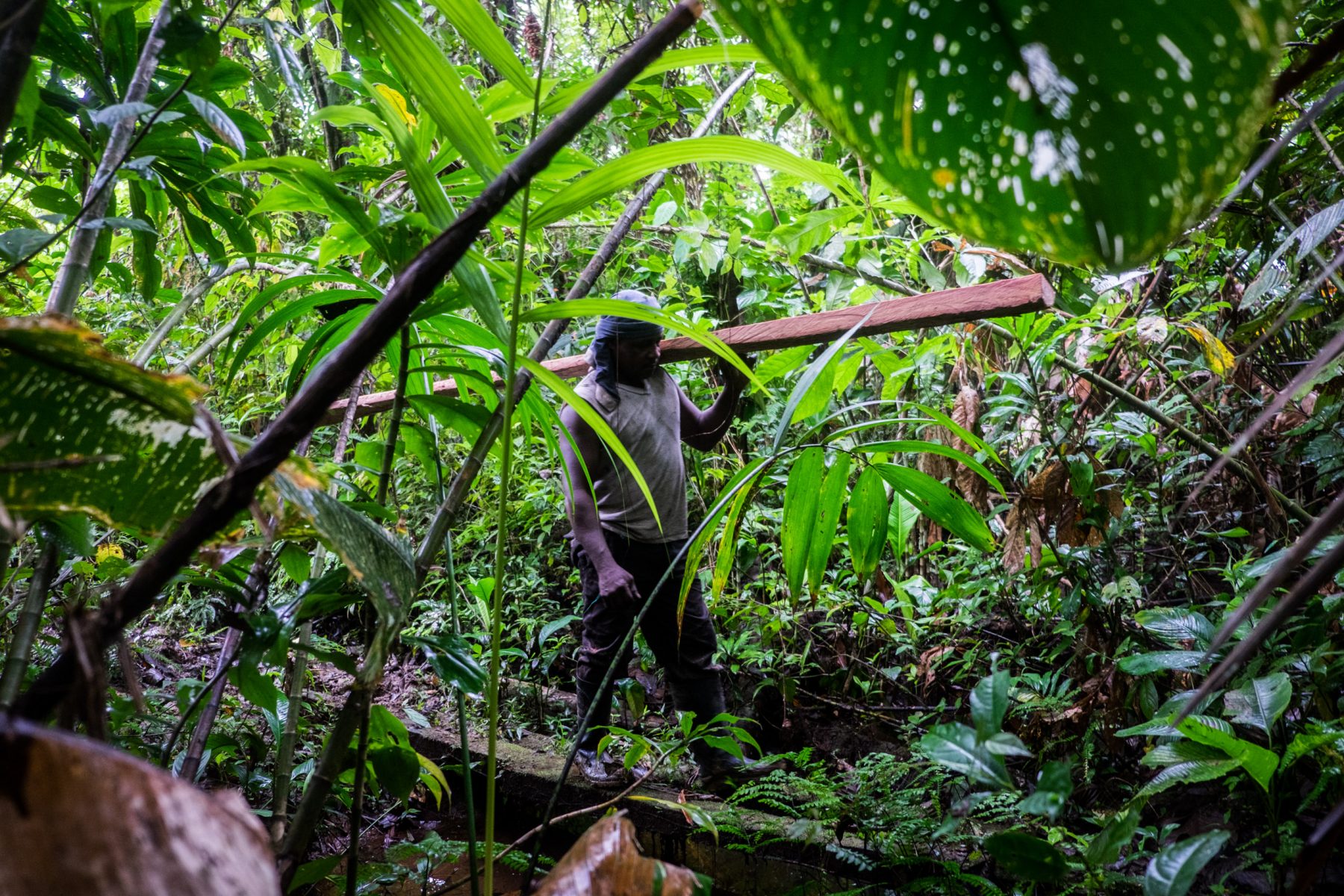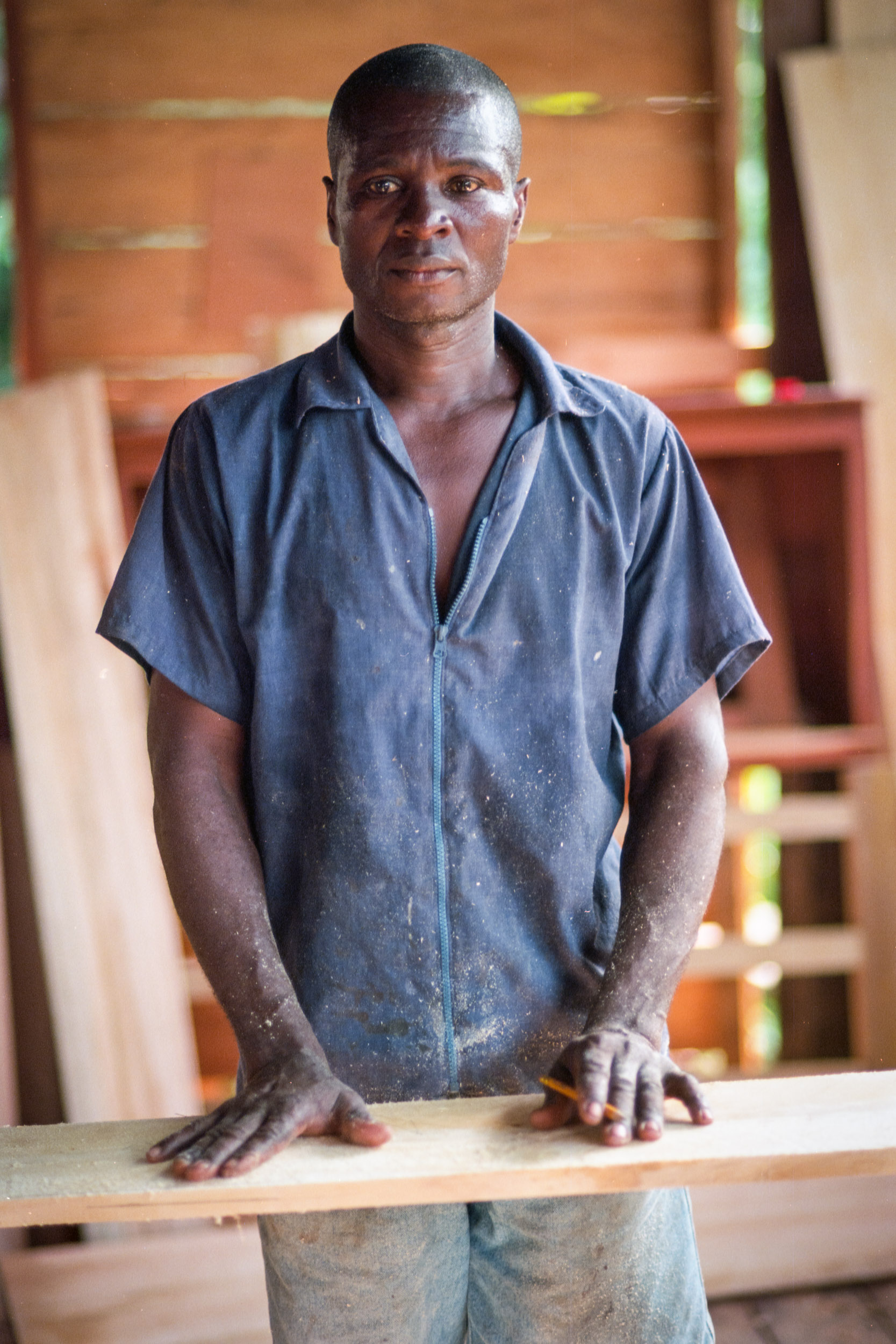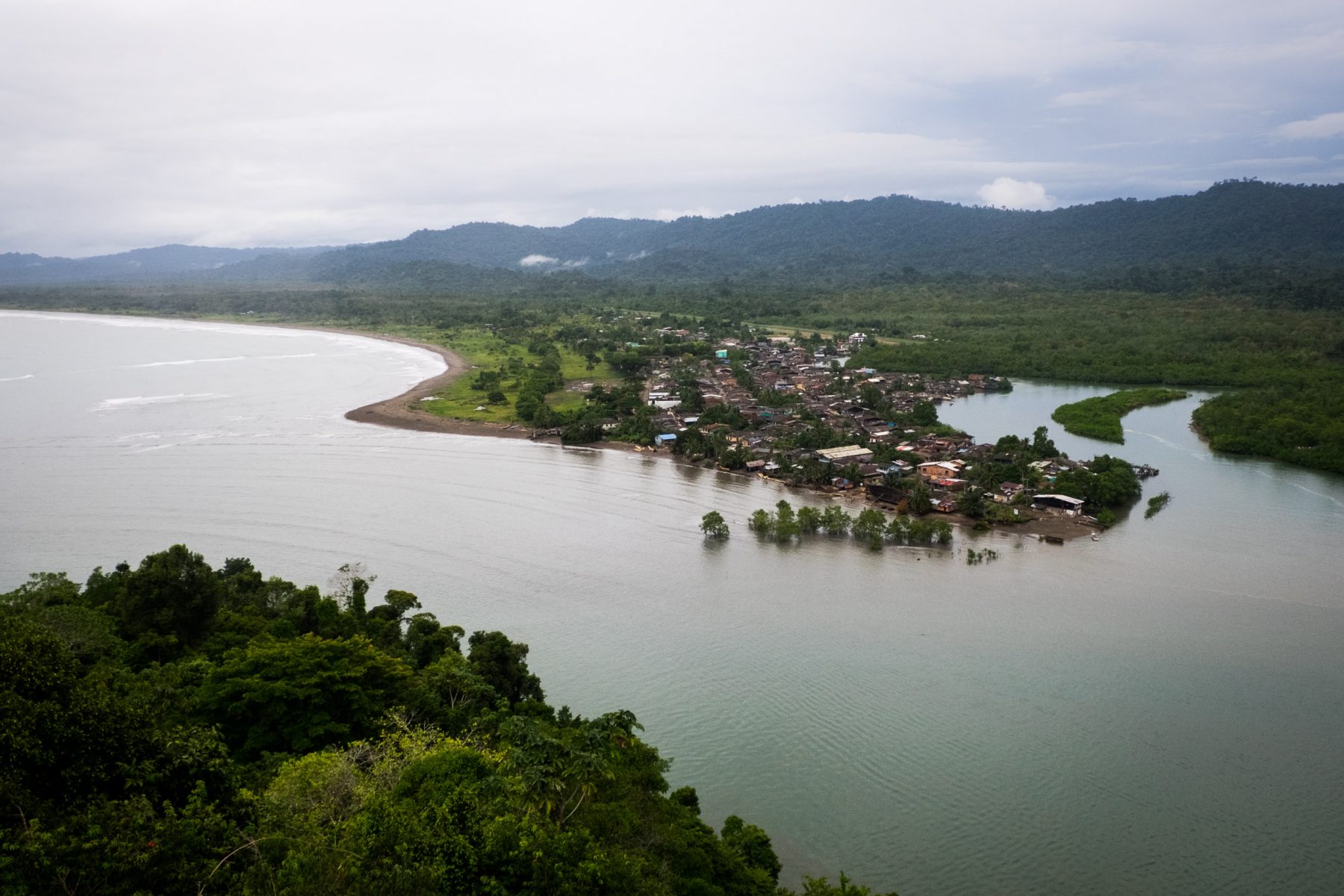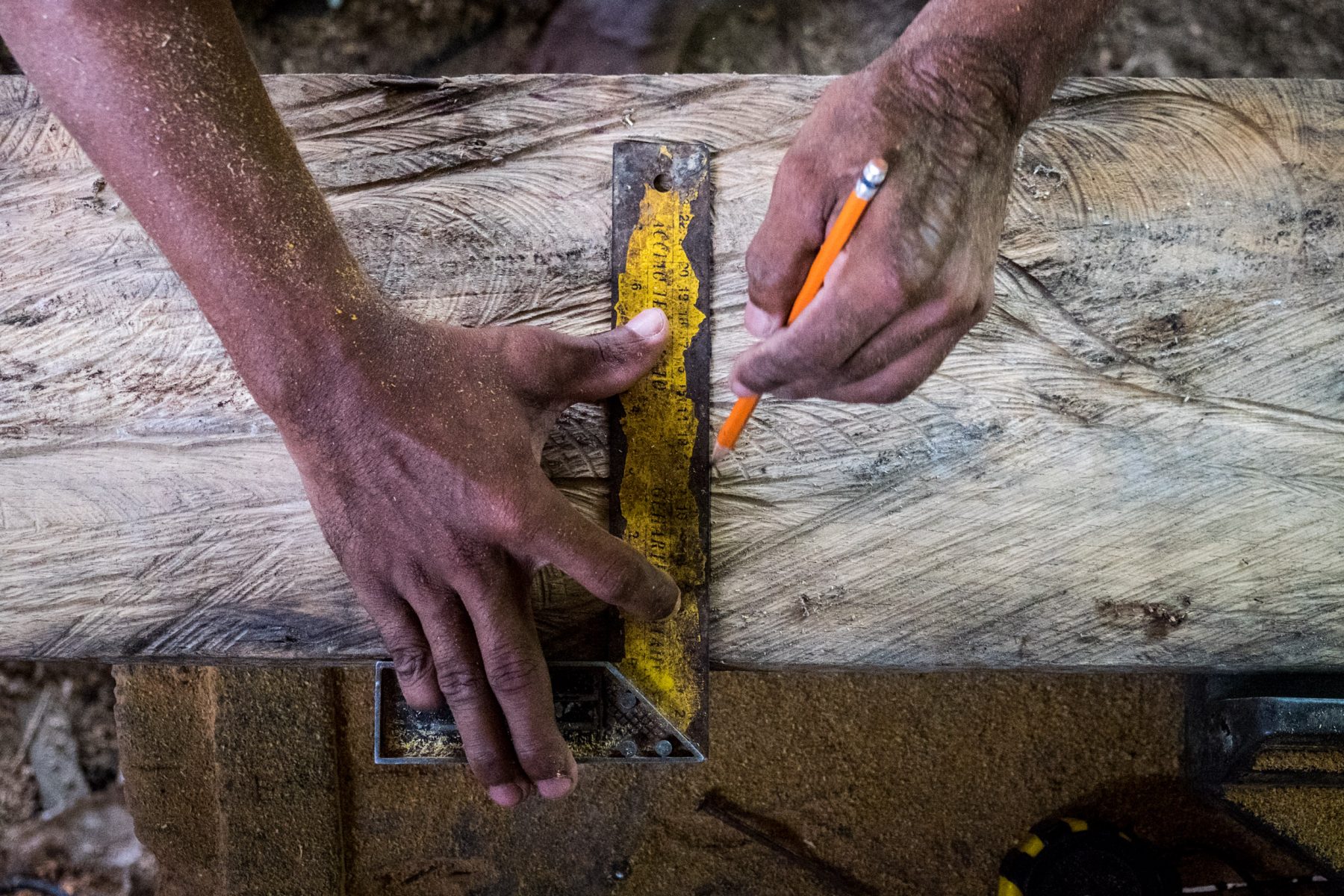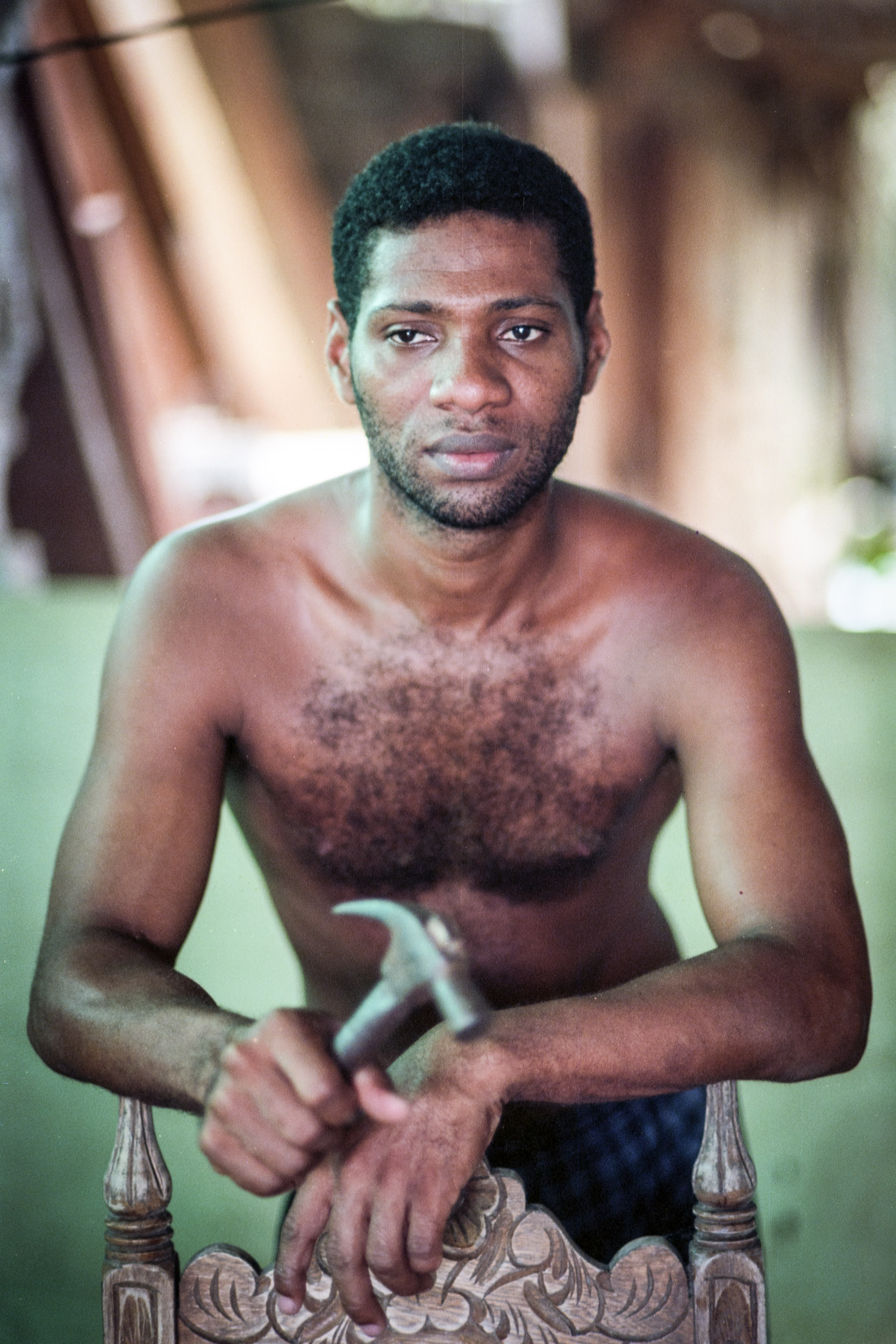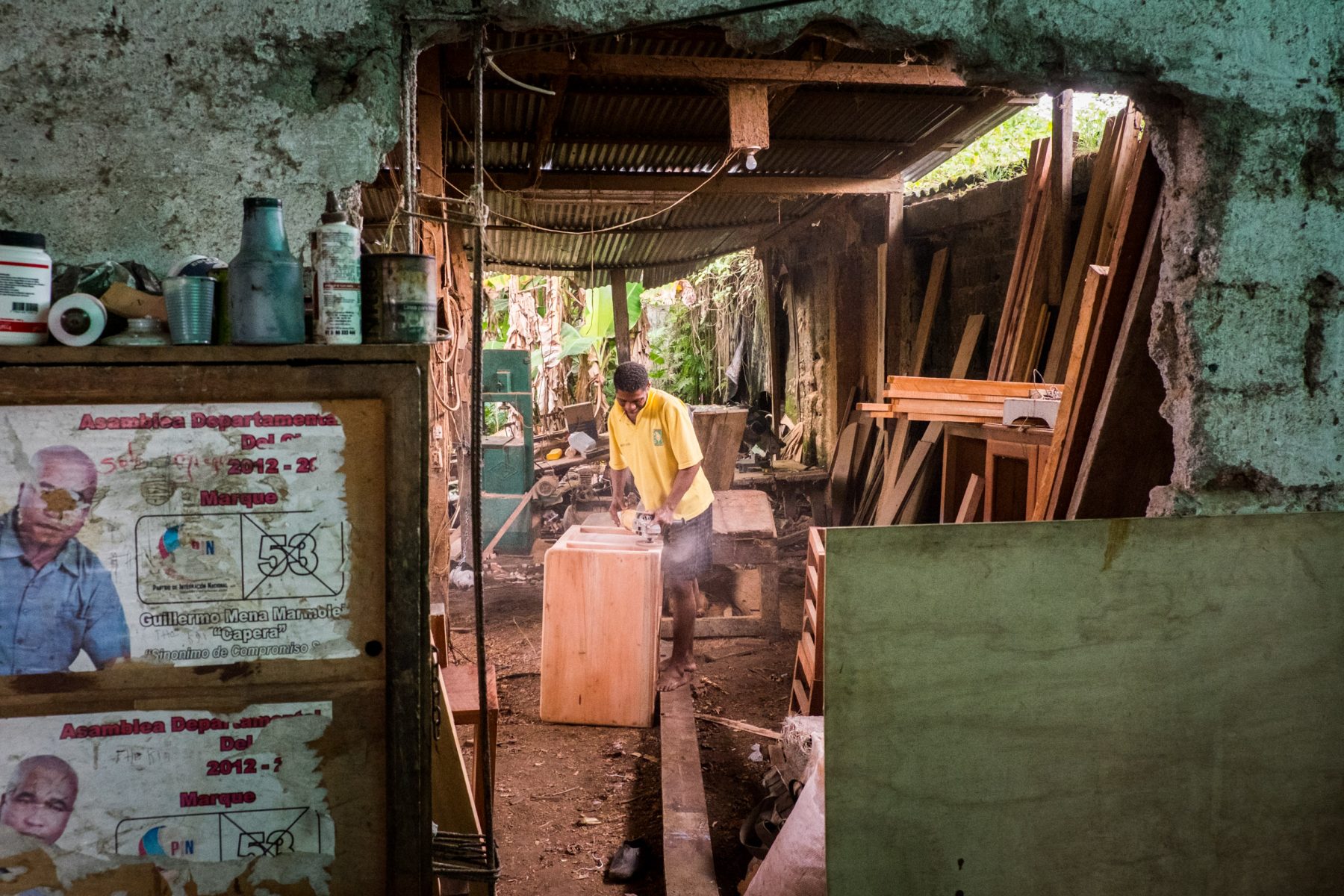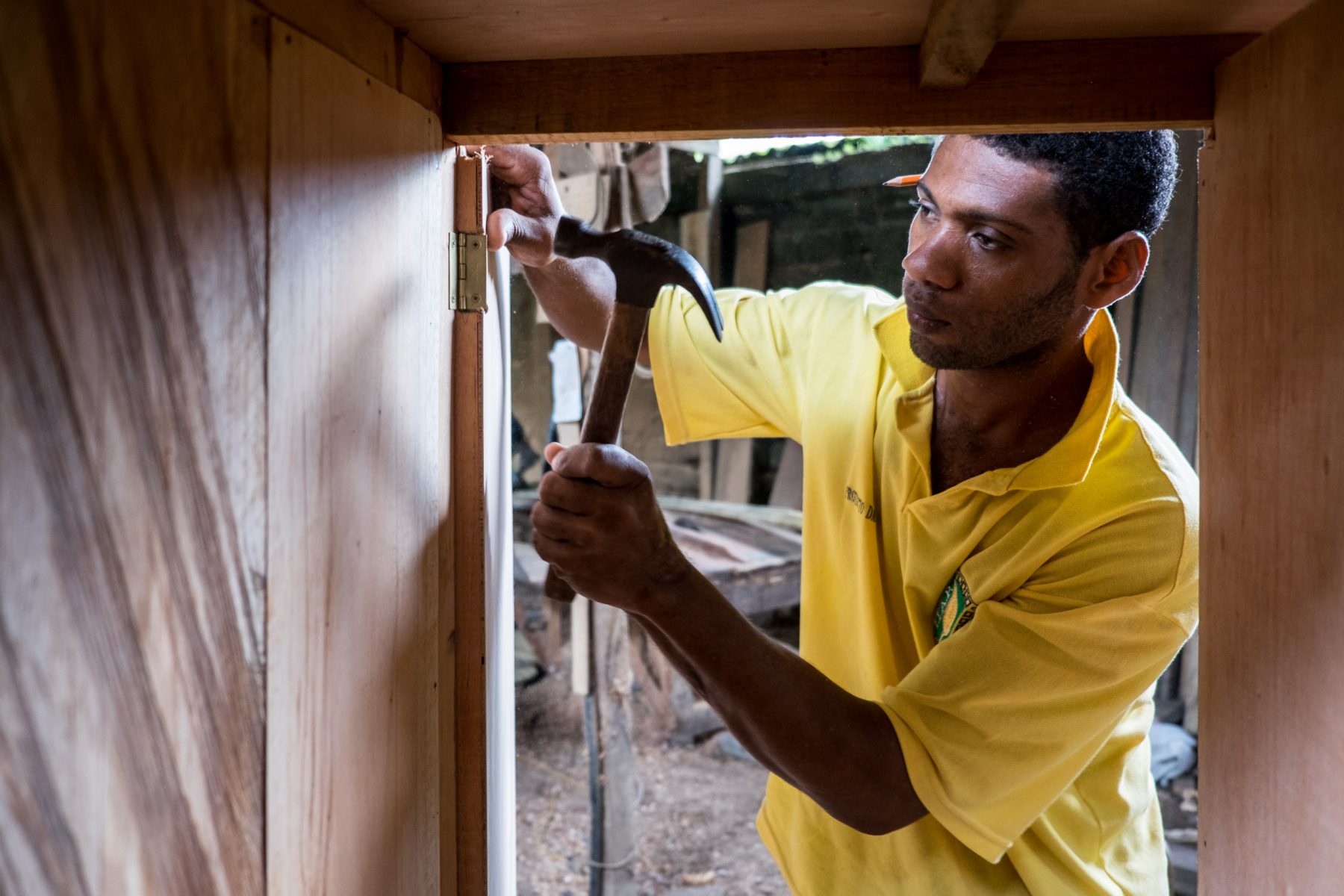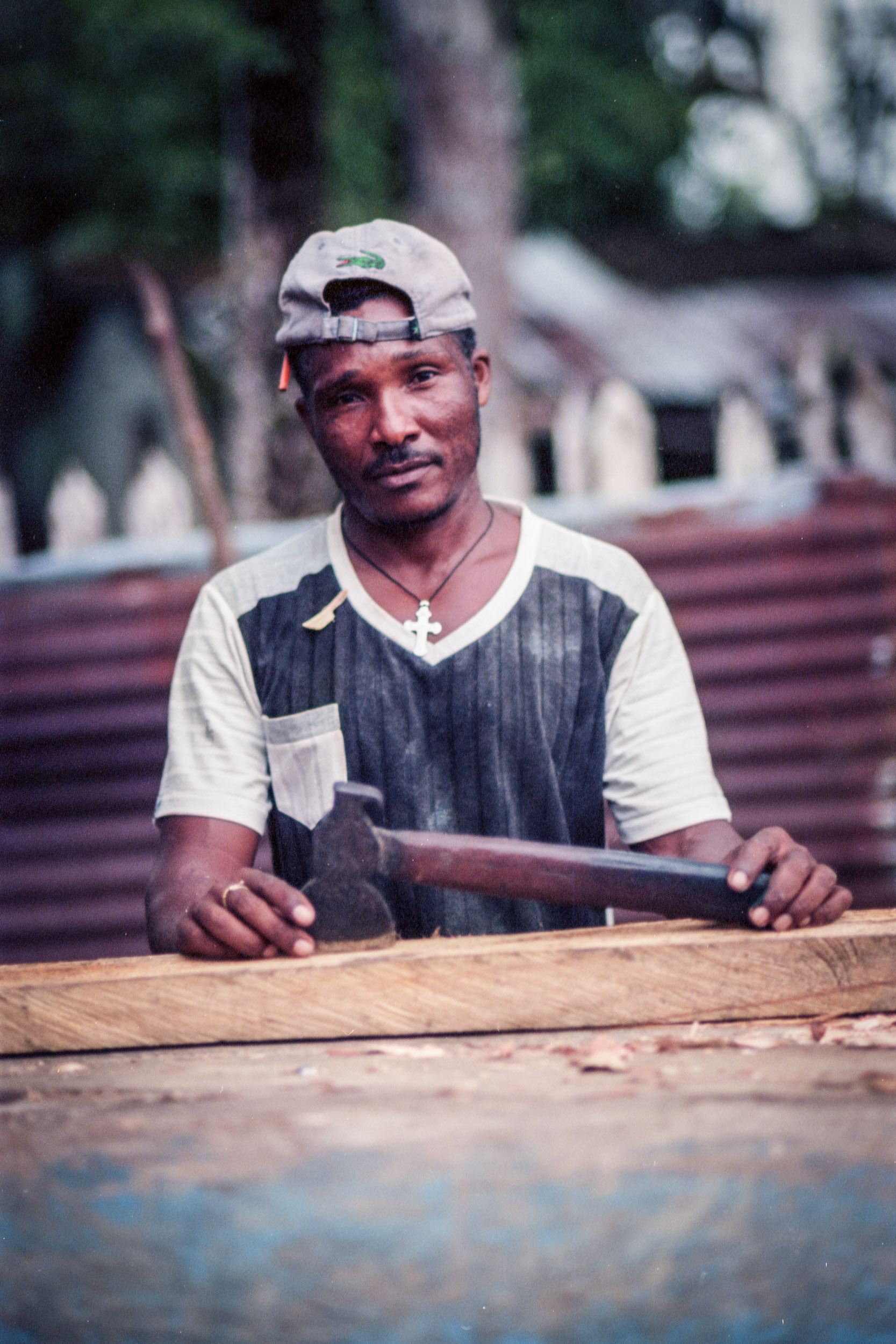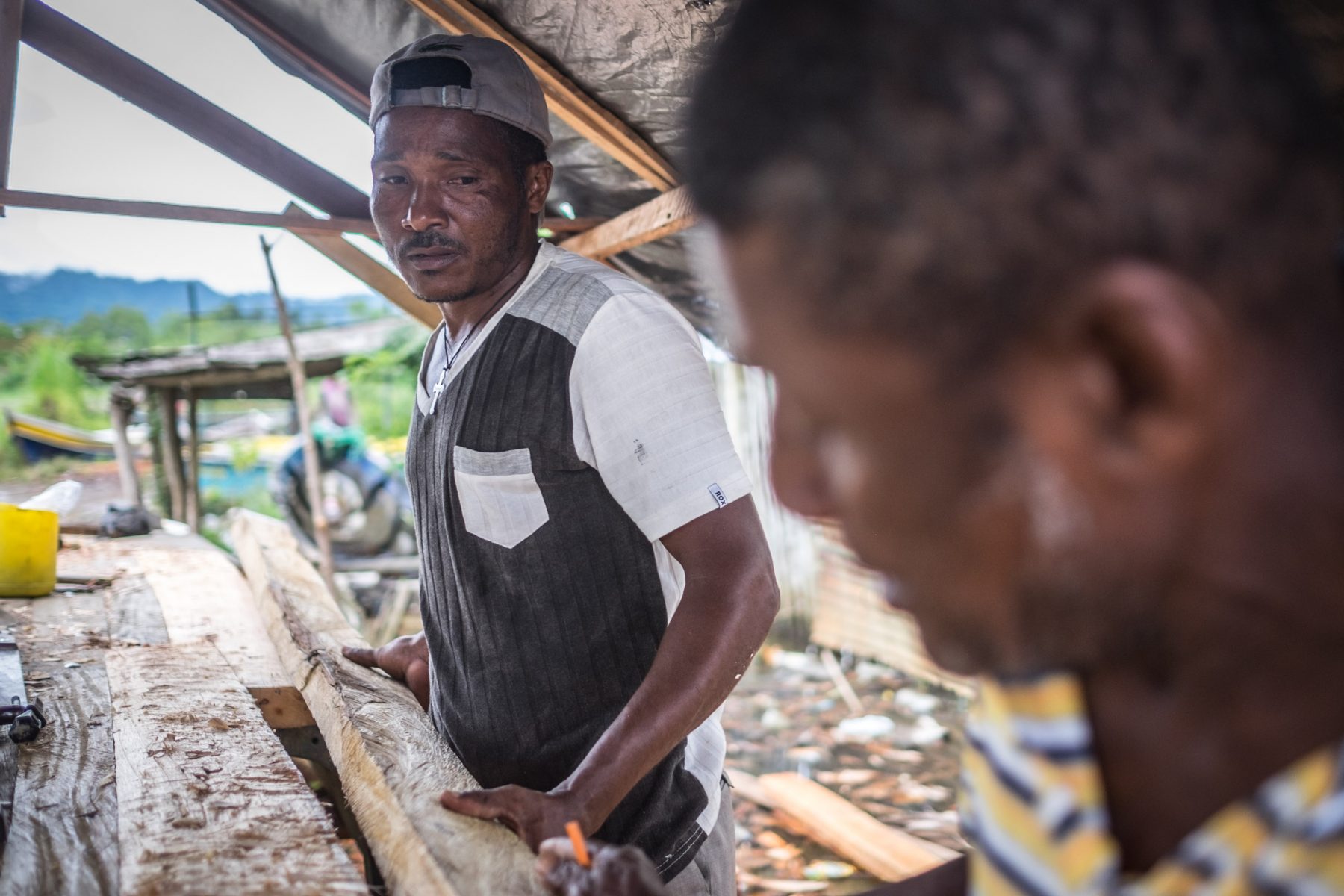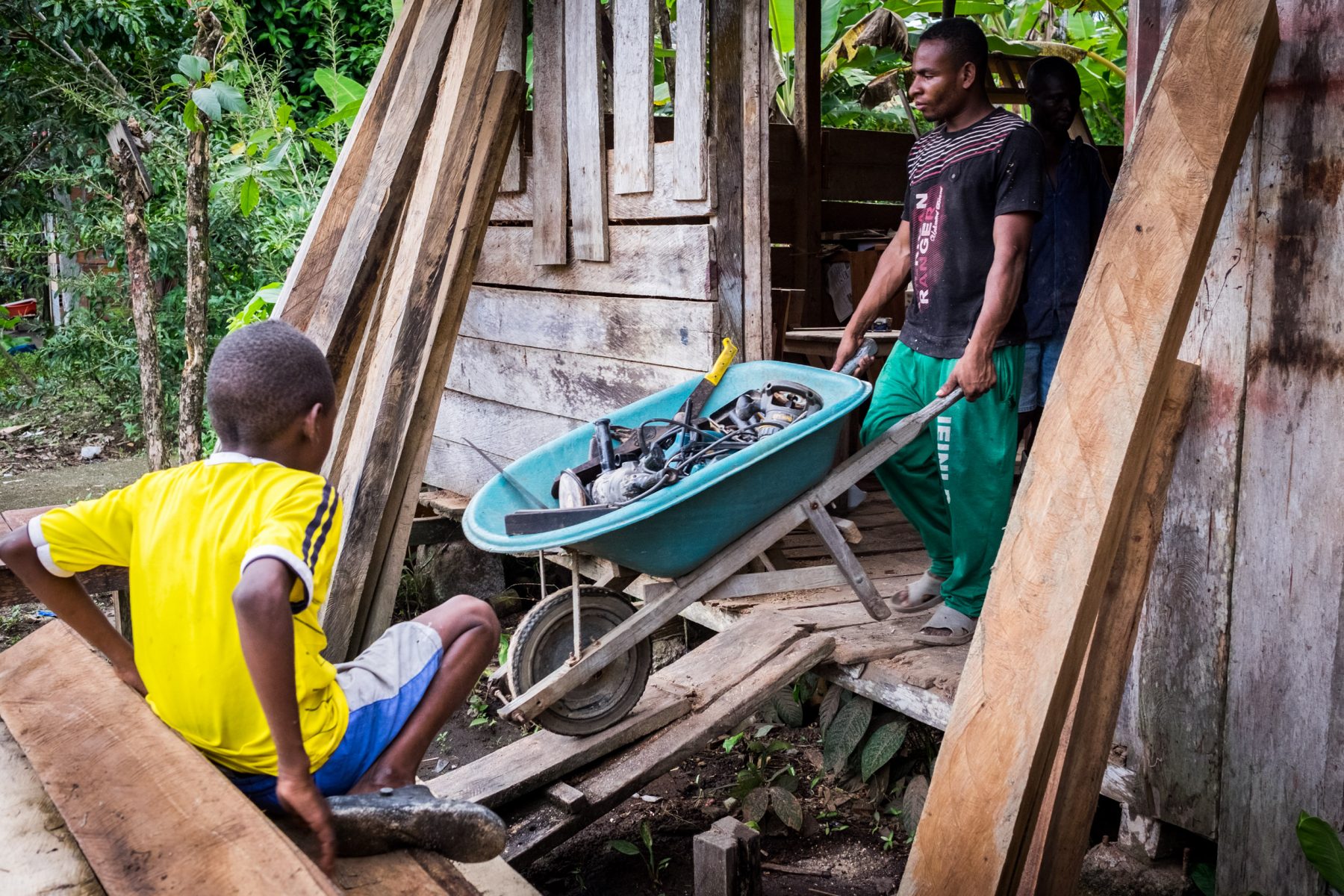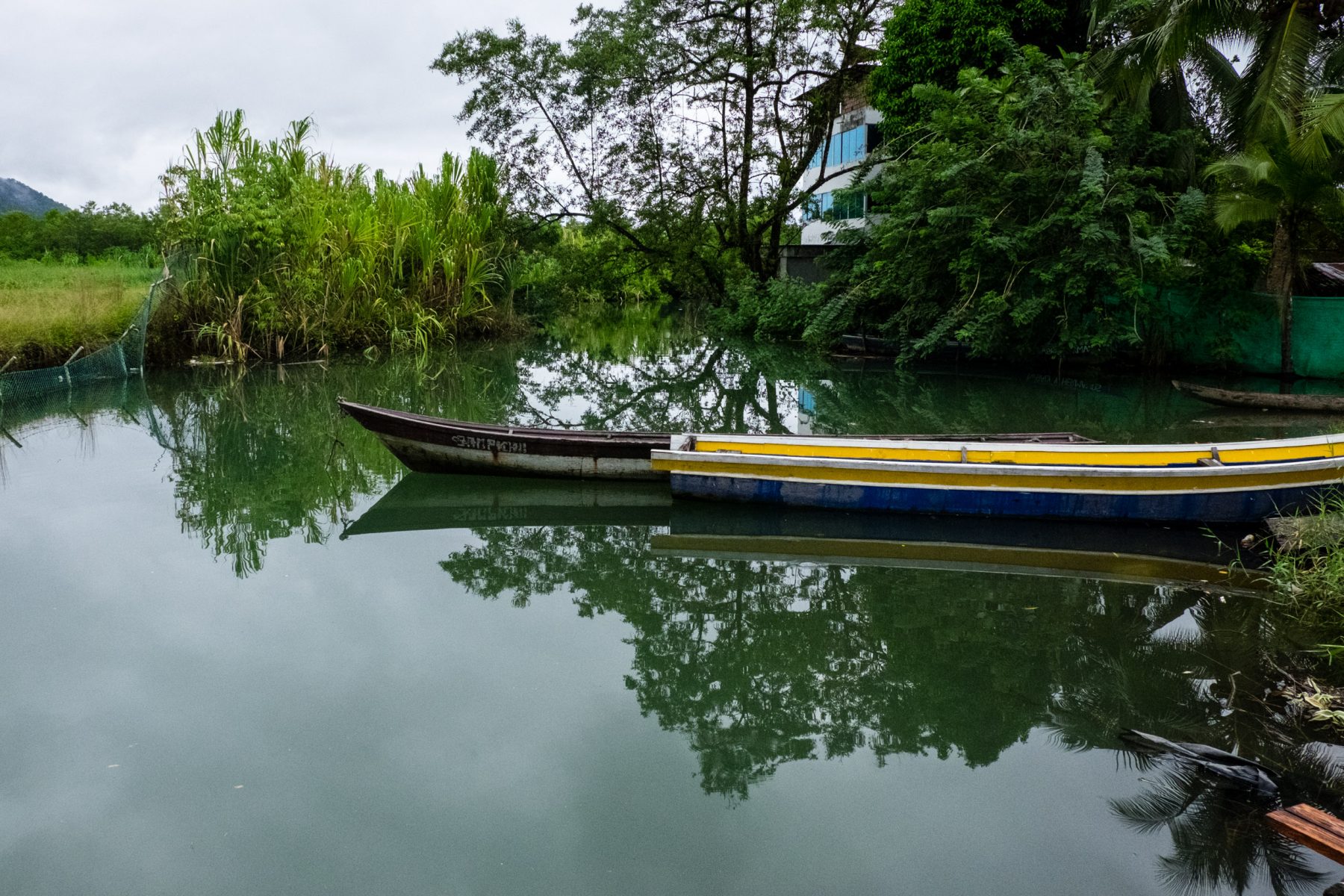Nuquí is a small and sleepy village in the Colombian rainforest, far away from any highway; it is inhabited by around 8,000 people. Only the smallest airplanes reach this town that is located just beside the Pacific Ocean.
Dawn brings light to the day and Merlón Lerma's small boat searches its way through mangrove forests. Lerma is accompanied by his assistant, his dog, and a motor saw as he is leaving for the rainforest near Nuquí. He looks for a tree to construct a jamb for his house door. In prior decades, the residents of Nuquí used to cut down the whole forest and export large amounts of high-quality timber. The forests around Nuquí are famous for their wood. Cutting all these trees, the most valuable resource in the region, led to a destruction of nature and the disappearance of the fundamental elements of life. A number of years ago, the residents changed their minds and began to value a healthy and well-preserved forest. Currently, they only cut trees for their own use and do not export trees any longer.
